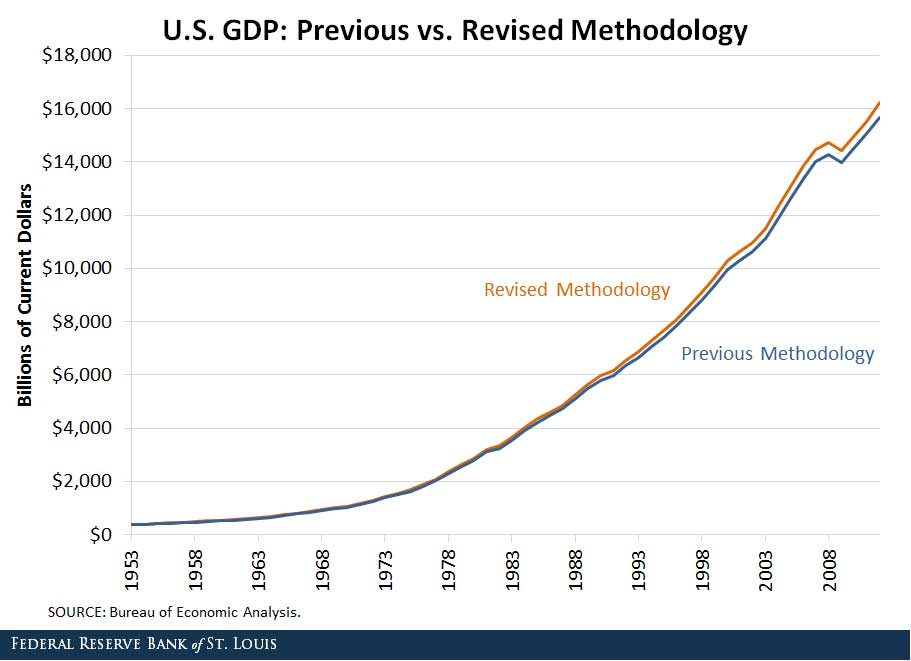Until 2013, research and development (R&D) expenditures were considered intermediate inputs in the U.S. and, therefore, not included in the measure of GDP. However, the Bureau of Economic Analysis revised the GDP calculation in 2013 and started treating R&D expenditures as a fixed asset (i.e., an investment) rather than an intermediate good.1 As a result, R&D expenditures are now part of GDP.
This revision has increased the levels of GDP. The figure below plots GDP computed with the new and old standard through 2012.

We can observe that GDP under the revised methodology is larger. In particular, it was 3.6 percent higher under the new methodology in 2012 than under the previous one that treated R&D expenditures as an intermediate good.2
The U.S. is not the only country that has introduced these changes. In 2009, the United Nations Statistical Commission started a revision to the System of National Accounts to treat R&D spending as an investment, rather than as an intermediate input. This reclassification has had a positive effect on GDP, which increased by 3.5 percent on average for the European Union.3
Despite the revision to U.S. data, studies show that the overview picture of economic activity does not change substantially.4
Notes and References
1 R&D investment is reported in the national account statistics as a new asset category called “intellectual property products" or intangible assets, together with software and entertainment, literary, and artistic originals.
2 Moris, Francisco; Jankowski, John; Boroush, Mark; Crawford, Marissa; and Lee, Jennifer. “R&D Recognized as Investment in U.S. GDP Statistics: GDP Increase Slightly Lowers R&D-to-GDP Ratio." InfoBrief NCSES, March 30, 2015, NSF 15-315.
3 van de Ven, Peter. “New Standards for Compiling National Accounts: What’s the Impact on GDP and Other Macroeconomic Indicators?" OECD Statistics Brief, February 2015, No. 20.
4 “Revising Economic Indicators: Here’s Why the Numbers Can Change." BEA Blog, July 8, 2013.
Additional
No comments:
Post a Comment